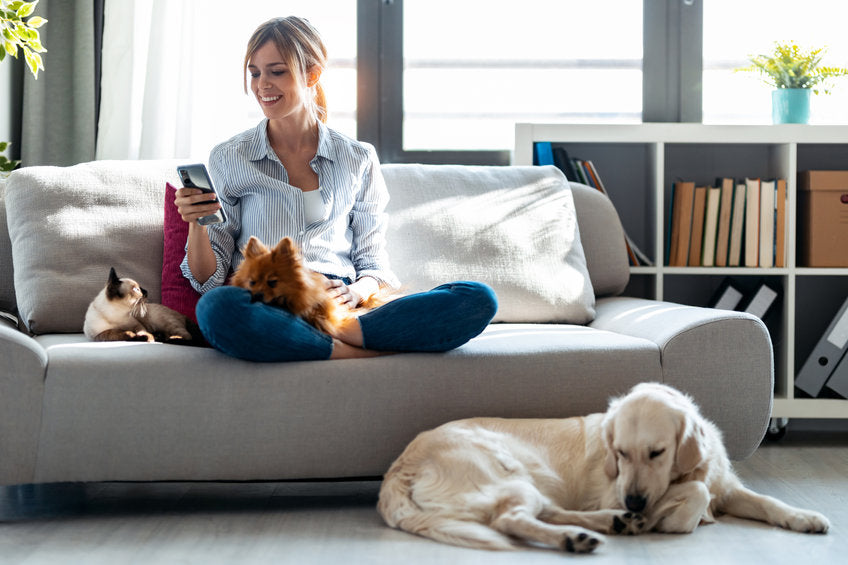
Pet Proofing 101
It is important to pet-proof a house with the same vengeance that we use to baby-proof our homes. As pet parents, we must recognize that every home contains a variety of items and substances that can be dangerous or even fatal if ingested by pets. You protect your pet’s health by targeting the most common health hazards found in every room of your home as well as within your outdoor space.
Pet-proofing your home can protect your pets and save you thousands of dollars in veterinarian medical costs.

What is one of the most common items in the home that is chewed by dogs? And cats?
One of the most common items that dogs chew is the remote controls. Believe it or not, the remote control is “palmed” by many members of the family. Easily reached off of a coffee or side table, and pets chew it because it has the familiar smells of family members. Chewed plastic and batteries can cause thousands of dollars in veterinary bills. Keep remotes up high, far away from pets.
Cats can easily chew plants. Due to the fact cats can easily climb up on tables, we need to keep plants out of our pet’s reach. Before buying indoor, outdoor, and holidays plants and flowers, check the ASPCA toxic and non-toxic plant list at ASPCA.org

There seems to be a high rate of problems with pets getting into medication. How does this happen?
Pets ingesting medications seems to be an increasing problem for pet owners. Do not leave human medications on a nightstand, as pets who easily lounge or sleep in human beds have easy access. Never store pet meds with human meds. Many people have not carefully looked at labels and have given pets human medication and vice-versa. Keep human meds and pet meds stored separately.
Additional advice for pet owners
Pet owners should examine every room of their house including their garage and yard and look for potential pet hazards. Pets are curious creatures and can open cabinets, get into garbage cans, and chew and ingest items like underwear and socks that are left on the ground. Make sure pets have plenty of exercise and appropriate toys and activity to keep them fulfilled. Consider closing doors to bedrooms and bathrooms, having a kitchen garbage can with a lock, installing child-proof locks on garbage cans, picking up items left on floors like socks, underwear, and bags. Additionally, talk to kids about what to give and not to give pets, picking up toys as well as leaving arts and craft items accessible to their favorite four-legged friends.
To learn more about Petrendologist Charlotte Reed and these tips, listen to her syndicated radio show visit thepetbuzz.com. You can also follow her on The Pet Buzz social media channels Twitter, Facebook, and Instagram.
